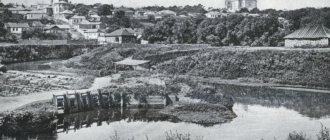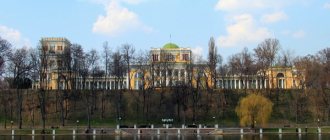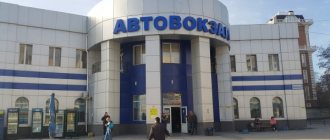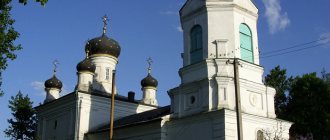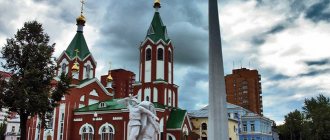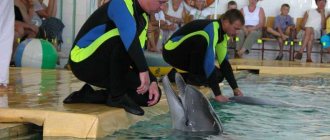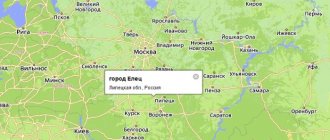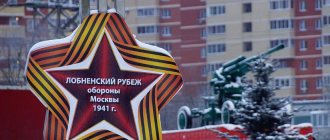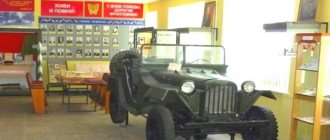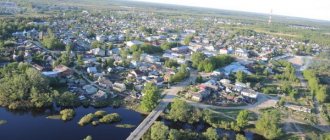Cities of Karachay-Cherkessia, interesting for tourists
This small Caucasian republic has only 4 cities. Each of them and its surroundings have attractions that can attract travelers.
- Cherkessk . This city is the capital of the republic and the main economic and cultural center of the region, located on the right bank of the Kuban River. The foundation of the settlement dates back to 1825 on the Kuban border line. Initially, the village and then the city were called Batalpashinsk, having received more than one name, since 1939 the city began to be called Cherkessk. It contains many religious and architectural objects and commemorative steles and memorials.
- Karachaevsk . This city is an important republican center and a large industrial zone. Karachaevsk is located in the valleys of the three rivers Kuban, Mary and Teberda among the picturesque mountain peaks. This city arose relatively recently, in 1926. In Karachaevsk there are a number of monuments dedicated to significant events for this region, religious buildings of such religions as Christianity, Islam and Protestantism. Also surrounded by the city, medieval settlements were discovered, which indicate active life in these places for many centuries.
- Teberda. The city is located in the valley of the river of the same name on the territory of the Teberda Nature Reserve and has the status of a resort.
Initially, a small settlement of the Karachay people was founded in 1868 and in 1971 received the status of a city. Thanks to the unique climatic conditions, sanatoriums began to open here, the first of which were anti-tuberculosis medical institutions. Teberda is a significant center for climatic and balneological treatment and hiking tourism in the region. - Ust-Dzheguta . The city stretches on the right bank of the Kuban River and practically borders Cherkessk. Its foundation is attributed to settlers from among the Cossacks in 1861. Since 1975, this village has had the status of a city. In Ust-Dzheguta there is a large memorial of Glory, as well as a number of religious sites.
On the territory of the republic there are such attractive ski clusters and tourist areas as Dombay and Arkhyz.
Administration of Karachay urban district
For the grand opening day, each village of Karachay sent its delegates. People walked along narrow gorges, along paths and along steep mountains, carts creaked, and riders pranced on magnificent horses. All of them were drawn to the cherished point - the new city. We spent the night in the mountains, made fires, gathered around the fires, dreamed out loud - what is the capital like? Meanwhile, the capital was preparing to receive guests. Some of the new buildings were still in the woods, many gaped with empty windows. But most of the houses have already been completed, the city has been built. In the evenings, electric light floods its new streets, and in these evening hours Mikoyan-Shahar really looks like a fairy tale: high rocky mountains surrounded it, moving close to the buildings. At night you can still hear the cry of owls, the cries of wild animals, and the squealing of awakened eagles. On November 7, 1927, the grand opening of the capital of Karachay took place. Several thousand people gathered. Many came hundreds of miles away. They settled in groups near Kuban and Teberda. Women played harmonicas, men sang along with them, and there were horse races and dances. For Kurmanlyk (sacrifice), bulls and rams were slaughtered, a big feast was arranged, and the cup of congratulations was passed around, and both old and young drank from it. The wrestlers entered the arena. On the opening day, the chairman of the regional executive committee, Kurman Kurdzhiev, riding a dashing white horse with a saber, cut the ribbon and congratulated everyone on the birth of the new city. Guests from Moscow and Kharkov, from Rostov, Kuban and other regions greeted the Karachay people. The interpreters worked tirelessly, translating the speeches of the guests. The celebration lasted for several days. People walked in crowds through the streets and looked in amazement at this miracle among the impassable mountains. The new city is unique and beautiful, it is all new, all of the same style: two-story stone houses with huge windows, spacious, bright rooms, smooth streets, wide roads. Mikoyan-Shahar is not a fairy tale, not a legend. Mikoyan-Shahar is a fact. Since then, Karachaevsk has gone through a difficult historical path. During its short history, it bore different names: from its foundation until 1943 - Mikoyan-Shahar. By the Decree of the Presidium of the Supreme Soviet of the USSR dated October 12, 1943, the Karachay Autonomous Region was abolished, its territory was assigned to Georgia, the indigenous population was deported to the regions of Central Asia, and the city was renamed by the Decree of the Council of People's Commissars of the USSR dated November 6, 1943 and until 1957 it bore name Klukhori. By decree of the Presidium of the Supreme Soviet of the RSFSR dated January 15, 1957, the city of Klukhori was renamed the city of Karachaevsk and bears this name to the present day. By the Decree of the Presidium of the Supreme Council of the RSFSR dated February 1, 1963, mining villages No. 11, No. 13, Markopi, Mara-Ayagy were included within the city, and the city itself was classified as a city of regional subordination. In 1971, the village was assigned to the administrative subordination of the city of Karachaevsk. Dombay, and in 1971 the resort village of Teberda was transformed into a city and also assigned to Karachaevsk.
Natural attractions of Karachay-Cherkessia
This small Caucasian republic is deservedly considered one of the most natural places in Russia.
Tourist leisure activities are presented here:
- walking routes;
- horseback riding;
- jeeping;
- rafting;
- rafting on catamarans and kayaks;
- rock climbing;
- ski slopes in winter.
Mountains
The mountains of Karachay-Cherkessia are picturesque green slopes with snowy tops. The landscape is mainly characterized by a combination of mountains and foothills, but there are also flat areas.
The most significant mountain peaks are the following:
- Elbrus. Its two peaks reach a height of 5600 m above sea level, which gives Elbrus the title of the highest point in Europe. The mountain itself is located on the border with Kabardino-Balkaria.
The main tourist routes pass along:
- northern slope;
- southern slope;
- eastern edge.
- Rome-mountain. This place is not only a significant geological object of the region, but also belongs to the historical and cultural places of the republic. Its height is not great, just over 1 km, but the landscape of the mountain is impressive. It forms natural fortress walls and staircases, already created by man, leading to a flat top. According to archaeological research, there was once a large settlement of primitive people here.
- Urup. These mountains are unofficially called “copper”, due to significant deposits of more than 50 types of ore. The slopes themselves are covered with forests, and the top of the mountain resembles a dome. Mount Urup is located next to the river of the same name at an altitude of 2715 m.
- Dombayskaya Polyana (“Heart of the Mountains”) is a tourist area surrounded by centuries-old coniferous mountains and flowering alpine meadows. On the slopes of its mountains there are many climbing and hiking routes (in winter, ski slopes), from simple to extreme difficulty. There are also cable cars leading to some viewing platforms.
Dombay is surrounded by the following mountains:
- Dombay-Ulgen (4046 m).
- Belaly-Kaya (3861 m).
- Sofrudju and tooth Sufrudju (3871 m).
- Mussa - Achitara (3012 m).
- Peak Ine (3455 m).
- Erzog (3683 m).
- Amanauz-Bashi (3530 m).
Lakes
The high-mountain lakes of Karachay-Cherkessia are located in small valleys between mountain peaks.
Among the most notable are:
- Baduk Lakes is a whole network of mountain reservoirs formed by the Baduk River, located in the Taberda Nature Reserve. In total there are 3 lakes, the length of which ranges from 80 m to 330 m, lying among birch and pine trees.
- Lake of Love. It does not have an approved name, but due to its heart-shaped appearance it received the unspoken name of Lake of Love. This small reservoir, located at an altitude of 2500 m among the mountains, is the source of the Revunok River.
- Murudzhinsky lakes. These reservoirs belong to the tourist area of Dombay and are unusual objects located in rocky faults. Blue Lake lies at an altitude of 2800 m. Black Lake is located nearby, but the path to it can be complicated by rockfalls.
- Lake Semitsvetnoye is located near Arkhyz in a picturesque place at an altitude of 2500 m next to the glacier that feeds the reservoir.
Waterfalls
Karachay-Cherkessia, the sights of which cannot be imagined without waterfalls cutting through the rocks, attracts many travelers.
Among the most picturesque objects it is worth noting:
- Sofia waterfalls are the hallmark of Arkhyz. They flow down from Mount Sofia, forming streams of varying strength (the largest is 100 m) and cascades in which the sun's glare is reflected, giving the water a special beauty. The waterfalls give rise to the Sofia River.
- Honey waterfalls are located in the Malokarachaevsky district. There are 5 waterfalls here, the most impressive of which reaches a height of 18 m. The name may have come from honey plants or wild bees that once lived in these places. Honey Falls are considered a romantic spot, often chosen by newlyweds.
- Alibek waterfall is the largest in Dombay and makes a great impression on tourists. Its height reaches 25 m and it is a young waterfall that appeared only in the 20th century.
- Sofrudju waterfall flows out of a glacier. Its waters fall to a height of 20 m.
- Chuchkhursky waterfall is multi-cascade. Its height is 15 m.
Glacier
The mountains of Karachay-Cherkessia cover more than 350 glaciers, which feed the waters of the Caucasian rivers and lakes.
Among the most interesting it is worth noting:
- The Amanauz glacier is considered the largest in area.
- The Dzhuguturluchat glacier is named after the aurochs that once lived in these places. This natural site is located at an altitude of 3291 m. A small waterfall flows from the glacier, surrounded in the upper reaches by sparse vegetation.
- The Kyukyurtlyu glacier is the longest, about 7.5 km.
- The Alibek glacier can be called easily accessible for tourist visits.
- The Great Sofia Glacier near the village of Arkhyz is very picturesque and forms cascades of waterfalls. Walking along the glacier, you can find blue ice in the cracks.
Plateaus and gorges
Karachay-Cherkessia combines many natural landscapes, one of the most unusual of which is the Bermamyt Plateau, whose highest altitude is 2643 m.
This place has some mystery, thanks to such natural phenomena as the appearance of the Brocken Ghost (rainbow circles in the clouds, with the silhouette of a person) and St. Elmo's Fire (stone blocks that glow due to accumulated lightning strikes).
One of the picturesque components of the natural attractions of Karachay-Cherkessia are numerous gorges:
- Alibek Gorge. It has a contrasting nature, combining ancient forests and young growth. The gorge is also notable for the cemetery located here, where climbers who died in these places are buried.
- Dzhegan Gorge characterized by rocky shores and water cascades among coniferous trees. Here you can visit the Alimkinskaya cave.
- The Amanuz Gorge is the source of the Teberda River and is easily accessible for tourist visits.
Healing springs
Karachay-Cherkessia attracts tourists with such an attraction as healing springs. The chemical composition of the mineral springs discovered here is unique. Here scientists have discovered more than 15 types of waters rich in free carbon dioxide. In total, there are about 200 mineral springs on the territory of the republic.
It is especially worth noting the following:
- Narzany Lashtraka (Sour springs). There are 17 springs here, but their waters are completely different in mineral composition and are applied to different organs of the human body.
- Thermal spring in the village of Kavkazsky , near Cherkessk. Its waters help with skin diseases, problems with joints and some internal organs.
- Arkhyz water is rich in trace elements and minerals such as fluorine and iodine. It is worth noting that its bottling occurs directly at the source, which guarantees the environmental friendliness of bottled water.
- The low-mineralized water of Teberda is extracted on the territory of the reserve of the same name and has a sour tint.
It is also worth highlighting the following mineral springs:
- Marinsky.
- Maharskie.
- Krasnogorsk.
- Dautskie.
Excerpt characterizing Karachaevsk
- Which officers? Who did they bring? “I don’t understand anything,” said the Countess. Natasha laughed, the Countess also smiled faintly. – I knew that you would allow... so I’ll say so. - And Natasha, kissing her mother, got up and went to the door. In the hall she met her father, who had returned home with bad news. - We've finished it! – the count said with involuntary annoyance. – And the club is closed, and the police come out. - Dad, is it okay that I invited the wounded into the house? – Natasha told him. “Of course, nothing,” the count said absently. “That’s not the point, but now I ask you not to worry about trifles, but to help pack and go, go, go tomorrow...” And the count conveyed the same order to the butler and the people. During dinner, Petya returned and told him his news. He said that today the people were dismantling weapons in the Kremlin, that although Rostopchin’s poster said that he would shout the cry in two days, but that an order had probably been made that tomorrow all the people would go to the Three Mountains with weapons, and what was there there will be a big battle. The countess looked with timid horror at the cheerful, heated face of her son while he said this. She knew that if she said the word that she was asking Petya not to go to this battle (she knew that he was rejoicing at this upcoming battle), then he would say something about men, about honor, about the fatherland - something like that senseless, masculine, stubborn, which cannot be objected to, and the matter will be ruined, and therefore, hoping to arrange it so that she could leave before that and take Petya with her as a protector and patron, she did not say anything to Petya, and after dinner she called the count and with tears she begged him to take her away as soon as possible, that same night, if possible. With a feminine, involuntary cunning of love, she, who had hitherto shown complete fearlessness, said that she would die of fear if they did not leave that night. She, without pretending, was now afraid of everything. M me Schoss, who went to see her daughter, further increased the Countess’s fear with stories of what she saw on Myasnitskaya Street in the drinking establishment. Returning along the street, she could not get home from the drunken crowd of people raging near the office. She took a cab and drove around the lane home; and the driver told her that people were breaking barrels in the drinking establishment, which was so ordered. After dinner, everyone in the Rostov family set about packing their things and preparing for departure with enthusiastic haste. The old count, suddenly getting down to business, continued walking from the yard to the house and back after dinner, stupidly shouting at the hurrying people and hurrying them even more. Petya gave orders in the yard. Sonya did not know what to do under the influence of the count’s contradictory orders, and was completely at a loss. People ran around the rooms and courtyard, shouting, arguing and making noise. Natasha, with her characteristic passion in everything, suddenly also got down to business. At first, her intervention in the bedtime business was met with disbelief. Everyone expected a joke from her and did not want to listen to her; but she persistently and passionately demanded obedience, became angry, almost cried that they did not listen to her, and finally achieved that they believed in her. Her first feat, which cost her enormous effort and gave her power, was laying carpets. The count had expensive gobelins and Persian carpets in his house. When Natasha got down to business, there were two open drawers in the hall: one almost filled to the top with porcelain, the other with carpets. There was still a lot of porcelain laid out on the tables and everything was still being brought from the pantry. It was necessary to start a new, third box, and people followed it. “Sonya, wait, we’ll arrange everything like this,” Natasha said. “You can’t, young lady, we already tried,” said the barmaid. - No, wait, please. – And Natasha began to take out dishes and plates wrapped in paper from the drawer. “The dishes should be here, in the carpets,” she said. “And God forbid that the carpets be spread out into three boxes,” said the barman. - Yes, wait, please. – And Natasha quickly, deftly began to take it apart. “It’s not necessary,” she said about Kyiv plates, “yes, it’s for carpets,” she said about Saxon dishes. - Leave it alone, Natasha; “Okay, that’s enough, we’ll put him to bed,” Sonya said reproachfully. - Eh, young lady! - said the butler. But Natasha didn’t give up, threw out all the things and quickly started packing again, deciding that there was no need to take the bad home carpets and extra dishes at all. When everything was taken out, they began to put it away again. And indeed, having thrown out almost everything cheap, what was not worth taking with us, everything valuable was put into two boxes. Only the lid of the carpet box did not close. It was possible to take out a few things, but Natasha wanted to insist on her own. She stacked, rearranged, pressed, forced the barman and Petya, whom she carried along with her into the work of packing, to press the lid and made desperate efforts herself. “Come on, Natasha,” Sonya told her. “I see you’re right, but take out the top one.” “I don’t want to,” Natasha shouted, holding her loose hair over her sweaty face with one hand and pressing the carpets with the other. - Yes, press, Petka, press! Vasilich, press! - she shouted. The carpets pressed and the lid closed. Natasha, clapping her hands, squealed with joy, and tears flowed from her eyes. But it only lasted for a second. She immediately set to work on another matter, and they completely believed her, and the count was not angry when they told him that Natalya Ilyinishna had canceled his order, and the servants came to Natasha to ask: should the cart be tied up or not and is it sufficiently imposed? The matter progressed thanks to Natasha’s orders: unnecessary things were left behind and the most expensive ones were packed in the closest possible way. But no matter how hard all the people worked, by late night not everything could be packed. The Countess fell asleep, and the Count, postponing his departure until the morning, went to bed. Sonya and Natasha slept without undressing in the sofa room. That night, another wounded man was transported through Povarskaya, and Mavra Kuzminishna, who was standing at the gate, turned him towards the Rostovs. This wounded man, according to Mavra Kuzminishna, was a very significant person. He was carried in a carriage, completely covered with an apron and with the top down. An old man, a venerable valet, sat on the box with the cab driver. A doctor and two soldiers were riding in the cart behind. - Come to us, please. The gentlemen are leaving, the whole house is empty,” said the old woman, turning to the old servant. “Well,” answered the valet, sighing, “and we can’t get you there with tea!” We have our own house in Moscow, but it’s far away, and no one lives. “You are welcome to us, our gentlemen have a lot of everything, please,” said Mavra Kuzminishna. - Are you very unwell? – she added. The valet waved his hand. - Don’t bring tea! You need to ask the doctor. - And the valet got off the box and approached the cart. “Okay,” said the doctor. The valet went up to the carriage again, looked into it, shook his head, ordered the coachman to turn into the yard and stopped next to Mavra Kuzminishna. - Lord Jesus Christ! - she said. Mavra Kuzminishna offered to carry the wounded man into the house. “The gentlemen won’t say anything...” she said. But it was necessary to avoid climbing the stairs, and therefore the wounded man was carried into the outbuilding and laid in the former room of m me Schoss. The wounded man was Prince Andrei Bolkonsky. The last day of Moscow has arrived. It was clear, cheerful autumn weather. It was Sunday. As on ordinary Sundays, mass was announced in all churches. No one, it seemed, could yet understand what awaited Moscow. Only two indicators of the state of society expressed the situation in which Moscow was: the mob, that is, the class of poor people, and the prices of objects. Factory workers, courtyard workers and peasants in a huge crowd, which included officials, seminarians, and nobles, went out to the Three Mountains early in the morning. Having stood there and not waiting for Rostopchin and making sure that Moscow would be surrendered, this crowd scattered throughout Moscow, into drinking houses and taverns. Prices that day also indicated the state of affairs. The prices for weapons, for gold, for carts and horses kept rising, and the prices for pieces of paper and for city things kept going down, so that in the middle of the day there were cases when the cabbies took out expensive goods, like cloth, for nothing, and for a peasant's horse paid five hundred rubles; furniture, mirrors, bronzes were given away for free. In the sedate and old Rostov house, the disintegration of previous living conditions was expressed very weakly. The only thing about people was that three people from a huge courtyard disappeared that night; but nothing was stolen; and in relation to the prices of things, it turned out that the thirty carts that came from the villages were enormous wealth, which many envied and for which the Rostovs were offered huge amounts of money. Not only were they offering huge sums of money for these carts, but from the evening and early morning of September 1st, orderlies and servants sent from the wounded officers came to the Rostovs’ yard, and the wounded themselves, who were placed with the Rostovs and in neighboring houses, were dragged along, and begged the Rostovs’ people to take care of that they be given carts to leave Moscow. The butler, to whom such requests were addressed, although he felt sorry for the wounded, resolutely refused, saying that he would not even dare to report this to the count. No matter how pitiful the remaining wounded were, it was obvious that if they gave up one cart, there was no reason not to give up the other, and give up everything and their crews. Thirty carts could not save all the wounded, and in the general disaster it was impossible not to think about yourself and your family. This is what the butler thought for his master.
Architectural landmarks
Among the architectural monuments it is worth highlighting:
- The fountain in Cherkessk is a color and musical fountain, built in 2009 and located near the city administration building. The jets of its water rise to a height of 10 m to the rhythms of music.
- The open-air amphitheater in Cherkessk was opened in 2013 in the Green Island recreation park. The building is made in the style of Antiquity with Greek sculptures at the entrance.
- Monument to I.S. Turgenev in Cherkessk.
- Stele "Friendship of the peoples of Karachay-Cherkessia."
- Sculpture “Invitation to Karachaevsk” or Goryanka (Karachaevsk) is a specially protected architectural site.
In Karachay-Cherkessia there is a monument to inviting tourists, built as a sign of hospitality - The memorial monument to Vladimir Vysotsky is located in the urban-type settlement of Dombay and was opened in 1999.
- The cathedral mosque in Cherkessk was built in the Byzantine style and is framed by 4 minarets.
- The cathedral mosque in Karachaevsk was built in 2007 and has a golden dome surrounded by 2 minarets.
How to get to Karachaevsk
By bus.
From the Shchelkovsky bus station by bus "Moscow - Stavropol". Next, take the bus “Stavropol - Karachaevsk”. Travel time - 32.40 hours.
By plane.
From Sheremetyevo, Domodedovo and Vnukovo airports on flights Moscow - Stavropol. Next, take the bus “Stavropol - Karachaevsk”. Travel time - 6.20 hours.
By long-distance train.
From Paveletsky station by train "Moscow - Stavropol". Next, take the bus “Stavropol - Karachaevsk”. Travel time - 37.30 hours.
By car.
Along the M-4 Don highway. Travel time - 33.40 hours.
Historical landmarks
Among the historical objects it is worth highlighting:
- Leso-Kyafar settlement (Zelenchuk district). Archaeologists date this place to the 2nd millennium BC. and it is assumed that the settlement was a cult object, as evidenced by numerous dolmen tombs and inscriptions similar to runes.
- Archaeological city-monument Khumarinskoe fortified settlement (11 km from the city of Karachaevsk) - this settlement produces finds that date back to the period from the 7th century. BC. until the 14th century Here are the ruins of residential buildings, water supply systems, and fortifications.
- The Adiyukh watchtower (Khabez region) was erected as the building of a large fortress in the 18th century. and served as a defensive facility.
- The Nizhne-Arkhyz historical, architectural and archaeological complex is a unique protected and carefully researched place that reveals a rich history and shows the architecture of this area in the early Middle Ages.
Significant monuments of Karachay-Cherkessia
The following iconic memorials may be noted here::
- The Museum-Monument “Defenders of the Caucasus Passes” (Karachaevsky district) is a museum and a mass grave in one architectural ensemble. The monument was opened in 1968.
- The monument to the fallen soldiers in the Great Patriotic War (Malokarachaevsky district) is a bronze composition depicting a horse and a man with their heads bowed to full height. There is a small park nearby.
- Memorial complex to the victims of the deportation of the Karachay people (Karachaevsk).
Karachaevsk
Archaeological finds
On the site of modern Karachaevsk, the first graying appeared during the period of the Koban culture (Bronze and Iron Age). On the slopes of the mountains around the city there are a large number of ancient monuments.
Numerous archaeological expeditions in the mountains of Karachay on the territory of the city discovered bronze spear tips. In the vicinity of Karachaevsk, a round terracotta gilded plaque was found, on which a relief image of the Gorgon Medusa of the Sarmatian period was found, and a late medieval crypt was discovered, which, unfortunately, has not survived.
In 1975, on the right bank of the Kuban River, near its confluence with the Teberda River, archaeologists discovered the foundation of a small temple. Another interesting find was a one and a half meter stone cross, reminiscent in shape of a Maltese one, discovered near the southwestern border of the city and dated by researchers no later than the 10th century AD. Such crosses, carved from a monolith, were inserted into stone glasses in ancient times. Five similar crosses have been found in the CIS, two of which are in Karachay. At the southern outskirts of the city, not far from Kamennomost, archaeologists found a bronze encolpion cross.
Foundation of the city
The initiator of the construction of Karachaevsk was the first chairman of the Karachay-Cherkess Regional Executive Committee, Kurman Alievich Kurdzhiev. According to mountain traditions, to make the final decision on the construction of a new city and its location, he assembled a council of the oldest, respected people of Karachay. 4–5 people from each village were invited to the council. The initiative of K. A. Kurdzhiev was approved and then supported by the first secretary of the Ordzhonikidze regional committee of the CPSU (b) Anastas Mikoyan.
The laying of the first stone for the foundation of the future Karachaevsk took place in 1926 on the site where the city hospital is now located. From the entire territory of Greater Karachay, people on carts drawn by oxen and horses brought stones from the gorges to the construction site. United by one idea, they, sparing no effort, quickly erected the first houses, which served as the basis for the further development of the city. This is how the history of Karachaevsk began. Before this, the people, who by that time had their own autonomous region, did not have their own city, their own economic and cultural center.
On July 17, 1927, the second session of the Karachay Regional Council of Workers' Deputies took place, at which it was decided to assign the name Mikoyan-Shahar to the new city of Karachay, which was to be petitioned to the administrative commission of the All-Russian Central Executive Committee. “The City of Mikoyan” was conceived as the administrative center of the Karachay Autonomous Region created shortly before, the center of Karachay.
Each village of Karachay sent its delegates to the solemn ceremony dedicated to the opening day of the city. Meanwhile, the capital was preparing to receive guests. Many of the new buildings were still in the woods, some gaping with empty, unglazed windows. But most of the houses have already been put into operation.
On November 7, 1927, in the presence of several thousand people, the grand opening of the city, the capital of Karachay, took place. Many arrived here after traveling hundreds of miles. They settled in groups near the Kuban and Teberda rivers. There were dances and horse races, women played harmonicas, and men sang along with them. Wrestlers competed in the arena. On Kurmanlyk, as the sacrifice was called, rams and bulls were slaughtered. They had a big feast, and a cup of congratulations was passed around.
On that day, Anastas Mikoyan and the chairman of the regional executive committee, Kurman Kurdzhiev, announced the opening of the city of Mikoyan-Shakhara - the first city on the territory of what is now Karachay-Cherkessia. Kurdzhiev, riding a white stallion, cut the red ribbon with a sword and made a speech, congratulating everyone on the birth of the city. The Karachay people were welcomed by guests from Moscow, Kharkov, Rostov, Kuban and other regions. Interpreters worked, translating the speeches of the guests. The celebration lasted for several days, crowds of people walked the streets, looking with surprise and delight at the miracle city among the impassable mountains.
Development of Mikoyan-Shahar in the 1930s.
The author of the project and the first architect of Karachaevsk was the engineer-architect Ali-Soltan Toparaevich Geryugov, who made an invaluable contribution to the construction of the city. Mikoyan-Shahar was completely designed as a city in one architectural ensemble, quite modern at that time. Construction work proceeded at a rapid pace; multi-storey buildings, schools, hospitals and other social facilities were built. A medical college and a pedagogical college appeared in the city, and in 1930 a regional museum of local history was created.
In 1930–1931 A printing house was organized in Mikoyan-Shakhar, which was temporarily located in the Home for the Invalids and served mainly the publishing houses of the local newspapers “Kyzyl-Karachay” in the Karachay language and “Red Karachay” in Russian. This printing house could not publish textbooks and literature due to insufficient premises and equipment. This circumstance prompted regional organizations to begin construction of a new printing house in Mikoyan-Shahar in 1934, which was completed in 1935.
The population grew rapidly: in 1931, about 2 thousand people lived in the city, in 1932 - 2.8 thousand, in 1933 - 3.2 thousand, in 1934 - 3.6 thousand people .
In 1934, the city had a clinic with 11 rooms, and since 1931 a regional venous dispensary operated. A nursery was opened for children. In 1935, the Karachay Research Institute of the History of Language and Literature began its work, and in 1938, the Karachay Two-Year Teachers' Institute. Books by Karachay writers and poets began to be published.
Documents from 1935 noted that the regional center of Mikoyan-Shahar did not have the material and technical base for physical education, as a result of which the villages and villages did not have a support center for the development of physical education in the village, and the youth of the city were deprived of minimal favorable conditions for exercise sports. The immediate task the management set for itself was the construction of a comfortable stadium in Mikoyan-Shakhar.
During the Great Patriotic War
The Karachays fought against the invaders on the fronts of the Great Patriotic War, worked in the rear and made a great contribution to the cause of Victory, freedom and independence of their country. In the first months of the war, 15,600 people from the region were drafted into the Red Army. More than 2 thousand Karachais served in the workers' battalions. The remaining residents worked selflessly in the rear. The people of Karachay widely supported the call for help to the front.
By the beginning of 1942, the workers of the Karachay Autonomous Region collected and sent to the front over 6 wagons of individual and collective gifts, 70 thousand units of warm clothes. For the construction of the Red Karachay aviation squadron, only the collective farmers of the Malokarachaevsky district collected and sent 1.5 million rubles from personal savings, for which they were awarded the gratitude of the Supreme Commander-in-Chief I. Stalin. Many sons and daughters of Karachay showed courage and heroism on the war fronts.
During the war, Mikoyan-Shahar was occupied by German troops and liberated on January 23, 1943 by troops of the Transcaucasian Front.
Despite the merits of the Karachais, by the Decree of the Presidium of the Supreme Soviet of the USSR of October 12, 1943, the Karachay Autonomous Region was abolished, its territory was assigned to Georgia, and the indigenous population was deported to the regions of Central Asia. On November 6, 1943, by a resolution of the Council of People's Commissars of the USSR, the city of Mikoyan-Shakhar was renamed Klukhori.
City Karachaevsk
On January 15, 1957, by the Decree of the Presidium of the Supreme Soviet of the RSFSR, the city of Klukhori was renamed Karachaevsk and has since carried this name. On February 1, 1963, by the Decree of the Presidium of the Supreme Soviet of the RSFSR, mining villages No. 11 and 13, Mara-Ayagy, Markopi were included within the city boundaries, and the city of Karachaevsk itself was classified as a city of regional subordination.
Currently, the city of Karachaevsk is developing and improving, work is underway to improve park areas, and new social facilities are being built. The architectural appearance of the city is changing, while Karachaevsk retains its best features. The administration plans to reconstruct the old part of the city. The visiting card of the city is the sculpture “Mountain Woman”, installed in 1965 (sculptor Khamzat Krymshamkhalov), which is considered a symbol of the city’s eternal youth and hospitality. In August 2014, the sculpture “Mountain Woman” was completely restored.
Temples of Karachay-Cherkessia
Karachay-Cherkessia, whose sights may also attract connoisseurs of religious buildings. Some temple complexes have become places of pilgrimage from all over Russia.
Particularly attractive temples are:
- Shoan Temple (Karachay district) is a historical monument dating back to the 10th century, built in the Byzantine style.
- Sentinsky Church (Lower Teberda Karachaevsky District) is a Christian temple with more than 1000 years of history.
- The Church of the Intercession of the Blessed Virgin Mary (Cherkessk) is a wooden building with copper bells, built more than 250 years ago.
- The temple in the name of St. Nicholas the Wonderworker (Cherkessk) is a remake, built on the site of a destroyed temple.
- Nizhne-Arkhyz historical, architectural and archaeological complex on the territory of which there are 3 temples from the Middle Ages:
- The northern one is the largest of the temples. Its construction dates back to the 10th century. Most likely it was the Cathedral of the Alan Diocese.
- The middle temple dates back to the 10th century.
- The southern temple was erected in the 10th century. and presumably served the purpose of being the tomb of a wealthy family.
Honorary citizens of the city
- Magometov Saltan Kekkezovich (1920-1989) - Soviet military leader, colonel general
- Ruslan Saryev - three-time world champion in arm wrestling, Honored Master of Sports of the Russian Federation
- Chivadze Alexander - Captain of the USSR national team, Soviet Georgian football player, Honored Master of Sports of the USSR
- Kurdzhiev Sagit is a master of sports of the USSR in freestyle and national wrestling. Honored coach of Russia.
- Berdiev Shamil - international master of sports in freestyle wrestling
Tourist route – 5 most interesting sights
Karachay-Cherkessia, whose sights can surprise even the most discerning tourists, offers many interesting places, including
You should definitely pay attention to the following:
- The Special Astrophysical Observatory of the Russian Academy of Sciences (the village of Nizhny Arkhyz and the village of Zelenchukskaya) is open for tourist visits. Excursionists have access to a daytime visit, when they can get acquainted with the work of the observatory, and a night visit, when they can observe the starry sky using a powerful telescope.
- The tourist area of Honey Falls is a picturesque place where you can not only take walks and horseback rides in the surrounding area or to the foot of Elbrus, but also spend time using the hotel complex, baths, and recreation areas. It is also worth visiting the ethnographic museum “Karachay Compound”.
- Sour springs of Karachay-Cherkessia. You can try the spring waters in the Sanchar Gorge or the Lashtraka springs. The path from the nearest village of Phiya will be about 60 km and can be covered by off-road vehicles.
- The Nizhne-Arkhyz settlement immerses the traveler in the Middle Ages. It is located 20 km from Arkhyz and in ancient times it was here that the ancient capital of the Alans, the city of Magas, was located. Not far from it there is an interesting rock image - the Face of Christ.
- Dombay and Arkhyz, both tourist areas are worth significant attention, both in the summer, thanks to the numerous hiking and horse riding routes, and in the winter, when the ski slopes are ready to welcome extreme sports enthusiasts.
Karachay-Cherkessia is a unique place in the North Caucasus, where picturesque nature is combined with rich history and modern architecture. The republic's healing mineral waters and magnificent modern ski slopes attract a large number of travelers.
But the main attractions of Karachay-Cherkessia are the diverse natural mountain landscape combined with meadows and river valleys.
Author: Prokhorova Anastasia Sergeevna (anpr)
Article design: Vladimir the Great

